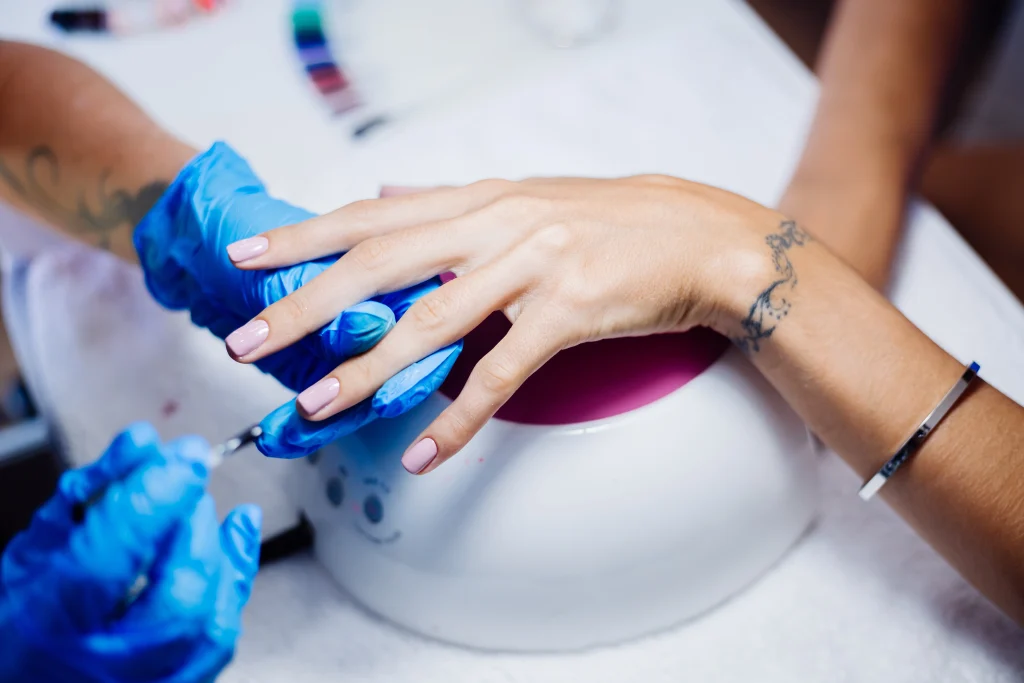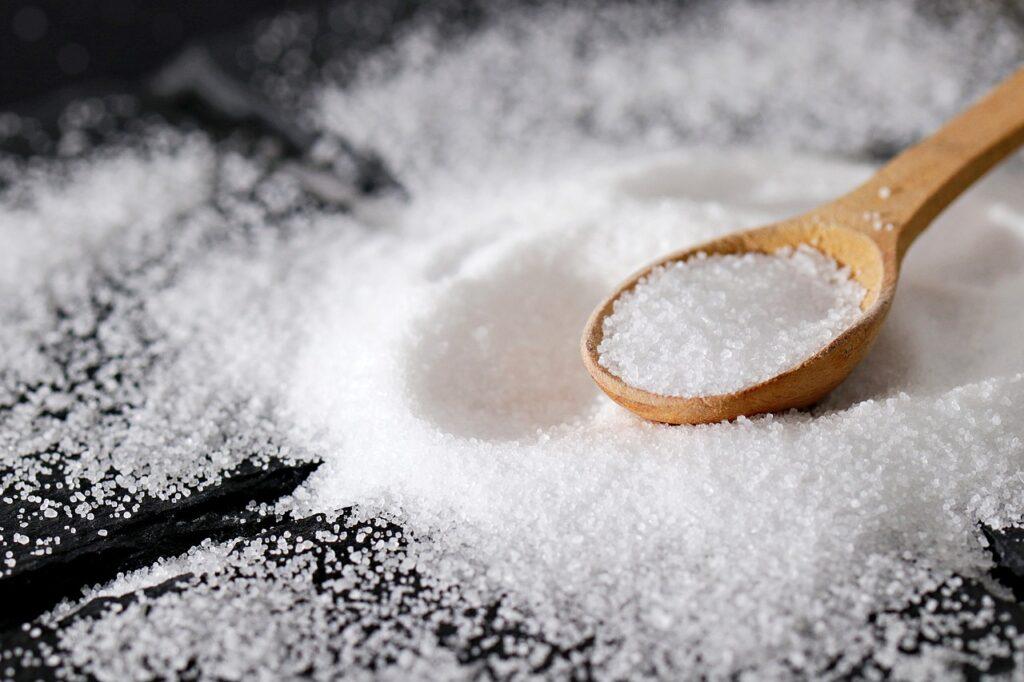Kalıcı oje, gün geçtikçe daha popüler hale gelen bir kozmetik uygulamadır. Hızlı kuruması, haftalarca süren dayanıklılığı, tırnak kırılmalarını önleme özelliği ve ellerin bakımlı görünmesi gibi avantajları nedeniyle pek çok gelişmiş ülkede tercih edilen bir tırnak bakım yöntemidir. Bu büyüyen ilgiyle birlikte, dünyanın dört bir yanında yalnızca kalıcı oje uygulaması yapan merkezlerin sayısı artmaktadır.
Geleneksel oje ile karşılaştırıldığında, kalıcı ojenin hem uygulama yöntemi hem de bileşimi farklılık gösterir. Bu yöntem, ultraviyole (UV) ışınlarından yararlanarak uygulanır. Ancak, bu süreç sırasında maruz kalınan UV radyasyonunun vücut üzerindeki etkileri tıp dünyası tarafından incelenmiştir. Elde edilen bulgular, kalıcı oje uygulamasının vücut üzerinde potansiyel etkilere neden olabileceğini ortaya koymuştur. Bu nedenle, bu yöntemi tercih eden bireylerin dikkatli olması gerektiği vurgulanmaktadır.
Kalıcı Oje Nedir?
Kalıcı oje, bilinen adıyla jel cila, hızlı kuruma özelliğine sahip, suya karşı dayanıklı ve özel uygulama yöntemleriyle kullanılan bir tür oje çeşididir. Özellikle tırnaklarının sürekli olarak ojeli görünmesini isteyen veya tırnak yeme alışkanlığı nedeniyle tırnakları bakımsız gözüken bireyler tarafından sıklıkla tercih edilir. Geleneksel oje ile kıyaslandığında, kalıcı ojenin formülü ve uygulama yöntemlerinde farklılıklar bulunmaktadır.
Bu yöntemde, kalıcı oje eğitimi almış profesyoneller tarafından uygulama gerçekleştirilir. Tırnaklara oje uygulandıktan sonra, bireyler ellerini ultraviyole veya LED ışığı yayan lambaların altında bekletir. Bu bekletme süreci sırasında oje tırnak yüzeyinde kurur ve sertleşir. Kalıcı oje, standart ojelerin aksine, aseton gibi yaygın oje çıkarıcı maddelerle dahi kolayca çıkarılamayan bir yapıya sahiptir.
Bu tür oje uygulamaları hem popülerlik kazanmış hem de eleştirilmiştir. Özellikle sağlık uzmanları, kalıcı ojenin tırnak ve cilt üzerinde olası etkilerine dikkat çekmişlerdir. UV veya LED ışığının uzun süreli maruziyeti ve kullanılan kimyasalların içeriği gibi faktörler göz önüne alındığında, kişilerin bu tür uygulamalarda dikkatli olmaları önerilir.
Kalıcı Oje Nasıl Yapılır?
Kalıcı oje veya jel cila uygulaması profesyonel bir yaklaşım gerektiren bir işlemdir. Aşağıda genel adımları bulabilirsiniz, ancak uygulamadan önce bir uzmanın rehberliğine ve eğitimine başvurmanız önemlidir:
- Hazırlık: Tırnak yüzeyi temizlenir ve törpülenir. Tırnak etleri itilir ve tırnak yüzeyi düzgün bir tabaka haline getirilir.
- Temel katman uygulaması: Uygulama öncesinde baz katman (base coat) olarak adlandırılan bir jel veya baz malzemesi sürülür. Bu, tırnağın düzgün bir yüzey oluşturmasına yardımcı olur ve ojenin tırnağa daha iyi yapışmasını sağlar.
- Renk katmanı: Seçilen renkteki jel cila, tırnak yüzeyine ince bir tabaka halinde sürülür. Her katman, UV veya LED lambalar altında belirli bir süre bekletilir. Bu işlem, her katmanın kurumasını sağlamak için yapılır.
- Üst katman uygulaması: Renk katmanlarının üzerine, ojenin dayanıklılığını artırmak ve parlaklığını korumak için üst katman (top coat) jel sürülür. Bu katman da UV veya LED lambalar altında sertleştirilir.
- Son işlemler: Üst katmanın sertleşmesinin ardından, tırnak yüzeyinde kalan yapışkan tabaka jeli temizlemek için özel bir solüsyon veya malzeme kullanılır. Bu adım, tırnağın pürüzsüz ve parlak görünmesini sağlar.
- Tırnak bakımı: Kalıcı oje uygulamasının ardından, tırnak ve el bakımına özen göstermek önemlidir. Jel cilanın dayanıklılığını ve görünümünü uzun süre korumak için tırnakları aşırı sıcak sudan, aşındırıcı kimyasallardan ve sert darbelere karşı korumak gerekir.
Kalıcı Oje Nasıl Çıkar?
Kalıcı oje çıkarma işlemi, profesyonel bir yaklaşım gerektiren bir süreçtir. Aseton gibi standart oje çıkarıcılar, jel ojelerin üzerinde etkili olmayabilir. Bu nedenle kalıcı ojenin doğru bir şekilde çıkarılabilmesi için uzman bir merkez veya kişiden destek almanız önerilir. Evde kendi başınıza çıkarma denemeleri, tırnaklarınıza ciddi zararlar verebilir. Bu yüzden tırnak sağlığınızı riske atmadan profesyonel yardım almak önemlidir.
Çıkarma işlemi sırasında, tırnak uzmanı özel olarak tasarlanmış metal bir alet kullanarak tırnak yüzeyini nazikçe kazır. Bu aşamada uzmanın deneyimi büyük önem taşır; aksi takdirde tırnak dokusu zarar görebilir ve incelme sorunları ortaya çıkabilir.
Sadece kalıcı oje uygulaması yapılmış tırnaklar için, aseton kullanarak çıkarma işlemi evde de uygulanabilir. Tırnaklara asetonlu pamuklar yerleştirilir ve ardından alüminyum folyo ile sarılır. Yaklaşık 20 dakika bekletildikten sonra, kalıcı ojenin aseton ile yumuşayarak kolayca çıkarılması sağlanır. Ancak, bu yöntem sadece ojenin çıkarılması durumunda kullanılmalıdır ve jel uygulaması yapılması durumunda tırnak sağlığını korumak adına evde çıkarma denemeleri önerilmez.
Geleneksel Oje İle Kalıcı Oje (Jel Oje) Arasındaki Temel Farklar
Geleneksel oje ve kalıcı oje (jel oje) arasında hem kimyasal hem de uygulama prosedürleri açısından önemli farklılıklar bulunmaktadır. Geleneksel oje ve kalıcı oje arasındaki bu farkları aşağıda detaylı bir şekilde açıklıyorum:
Geleneksel Oje:
- Geleneksel oje, tırnak yüzeyine bir veya birden fazla kat olarak sürülür ve hava ile temasla kurur.
- İçerisinde çözücülerde çözünen polimerler bulunur. Bu polimerler hava ile temas sonucu sertleşir.
- Aseton bazlı oje çıkarıcılar ile kolayca çıkarılabilir.
- Geleneksel ojeler daha kısa ömürlüdür ve tırnaklara sınırlı bir sertleştirme etkisi sağlar.
- Renk ve parlaklık seçenekleri geniş olsa da dayanıklılık süresi kısıtlıdır.
Kalıcı Oje (Jel Oje):
- Kalıcı oje veya jel oje, özel cihazlar kullanılarak tırnak yüzeyine uygulandıktan sonra UV veya LED ışıklar altında hızlıca sertleştirilir.
- Kalıcı oje içeriğinde fotobaşlatıcılar ve renklendiriciler bulunur.
- Kalıcı ojenin çıkarılması daha karmaşıktır ve profesyonel yardım gerektirebilir.
- Kalıcı oje, uzun süre dayanıklı olup 3 ila 5 hafta arası tırnak yüzeyinde kalabilir.
- Canlı renkler ve parlaklık sağlama konusunda avantajlıdır ve özellikle yoğun tempolu hayatı olan bireyler tarafından tercih edilir.
Geleneksel oje ve kalıcı oje arasındaki en önemli farklardan biri, kalıcı ojenin uygulanması ve çıkarılması sırasında kullanılan özel cihazlardır. Kalıcı oje, tırnaklarda daha uzun süre dayanıklı ve parlak bir görünüm sağlayabilirken, çıkarılma işlemi daha özenli ve uzman bir yaklaşım gerektirir.
Sağlık ve tırnak bakımı açısından uzmanlar, her iki türün de avantajlarını ve dezavantajlarını değerlendirmenizi ve bireysel tercihinize uygun olanı seçmenizi önerirler. Geleneksel oje daha hızlı ve kolayca çıkarılabilirken, kalıcı oje daha uzun süre dayanıklı ve bakımlı bir görünüm sağlayabilir, ancak çıkarılma işlemi daha dikkatli bir yaklaşım gerektirebilir.
Kalıcı Oje (Jel Oje) Kullanımının Olası Etkileri Ve Riskleri
Kalıcı oje (jel oje), tırnaklar üzerine uygulandığında uzun süre dayanıklılık sağlayan bir kozmetik üründür. Ancak, kalıcı ojenin vücut üzerinde potansiyel etkileri ve zararları bulunabilir. Bazı olası zararlar:
- Ultraviyole (UV) ışınları: Kalıcı oje uygulamasının sertleştirilmesi için UV veya LED ışıkları kullanılır. Uzun süreli maruziyet, ciltte yaşlanma belirtilerini hızlandırabilir ve cilt kanseri riskini artırabilir. Eller özellikle güneşe daha fazla maruz kalabileceğinden, bu ışınların etkileri daha da artabilir.
- Tırnak zayıflığı ve hasar: Kalıcı oje uygulamasının sık sık yapılması tırnak yüzeyine zarar verebilir. Tırnakların doğal nefes almasını engelleyebilir ve tırnak tabakalarının soyulmasına veya incelmesine yol açabilir. Özellikle yanlış çıkarma yöntemleri veya sık tekrarlanan uygulamalar, tırnak sağlığını olumsuz etkileyebilir.
- Alerjik reaksiyonlar: Kalıcı oje içerisinde bulunan fotobaşlatıcılar ve kimyasal maddeler, bazı kişilerde alerjik reaksiyonlara neden olabilir. Ciltte tahriş, kızarıklık, kaşıntı gibi belirtiler ortaya çıkabilir.
- Cilt irritasyonu: Kalıcı ojenin çıkarılması sırasında kullanılan kimyasal maddeler veya fiziksel süreçler, ciltte tahriş ve irritasyona yol açabilir.
- Tırnak enfeksiyonları: Kalıcı oje uygulamasının ve çıkarılmasının dikkatsizce yapılması, tırnaklarda bakteriyel veya mantar enfeksiyonlarına yol açabilir.
- Doğal tırnak solunumu engellenmesi: Kalıcı oje tırnağın doğal solunumunu engelleyebilir, bu da tırnakların sağlığını olumsuz etkileyebilir.
- Tırnak deformasyonu: Kalıcı oje uygulamasının sıkça yapılması tırnaklarda şekil değişikliklerine neden olabilir.
Tüm bu potansiyel zararlar göz önüne alındığında, kalıcı oje uygulamalarını bilinçli bir şekilde ve sınırlı bir şekilde yapmanız önemlidir. Eğer kalıcı oje uygulamayı düşünüyorsanız, iyi bir uzmanın rehberliğinde hareket etmek ve tırnak sağlığınıza özen göstermek önemlidir. Uygulamaları sıklaştırmak veya uzun süreli kullanımı aşırıya kaçırmak yerine ara ara dinlenme dönemleri bırakmak, tırnaklarınızın daha sağlıklı kalmasına yardımcı olabilir.
Jel Oje Yenileme Aralığı Nedir?
Jel oje uygulamasının ardından tırnaklar genellikle 2 ila 3 hafta boyunca dayanabilir. Bu süre zarfında tırnaklar uzamaya devam ederken, ojenin alt kısmında yeni tırnak büyümesi görülmez. Yeni tırnak büyümesi sıklıkla tırnakların yeniden jel oje ile kaplanmasına yol açar. Ancak, jel oje uygulamalarını ne sıklıkla yapmanız gerektiği kişisel tercihlere ve tırnak sağlığınıza bağlı olarak değişebilir.
Bazı dermatologlar, her jel oje uygulaması arasında tırnakların en az 1 ila 2 hafta boyunca çıplak kalmasını önerir. Bu dinlenme süreci, tırnakların kendilerini güçlendirmelerine, onarmalarına ve nemlenmelerine fırsat tanır. Bu aralıklı kullanım aynı zamanda tırnak yapısında olası çatlaklar veya renk değişikliklerini tespit etme fırsatı sunar.
Tırnak yapısında belirgin değişiklikler veya sağlık sorunları fark eden kişiler, bir sağlık profesyonelinin rehberliğinde hareket etmeli ve gerekli önlemleri almalıdır. Unutmayın ki jel oje uygulamaları güzel görünümünüzü artırabilir, ancak tırnak sağlığınızı korumak da aynı derecede önemlidir.







